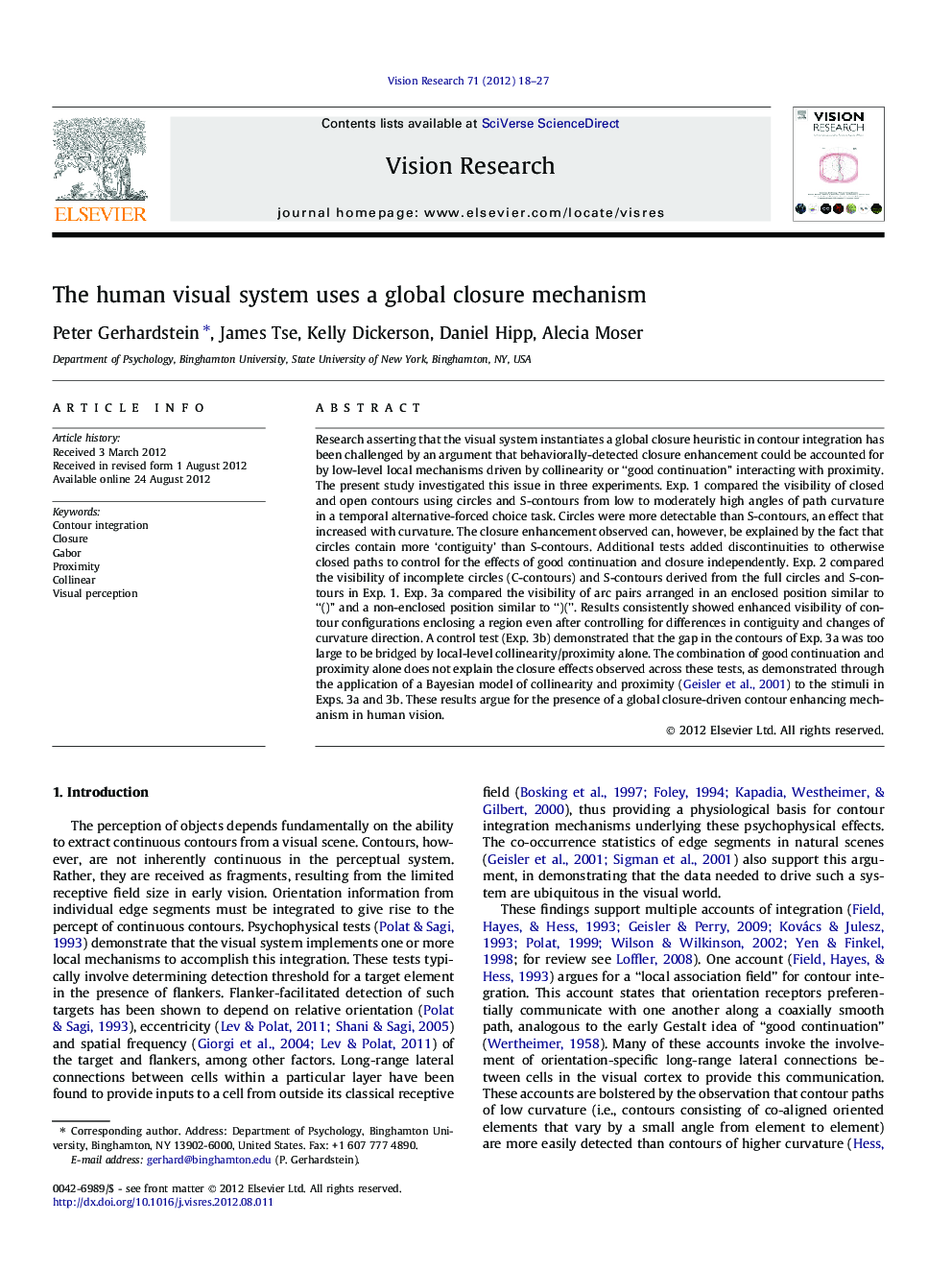| Article ID | Journal | Published Year | Pages | File Type |
|---|---|---|---|---|
| 4033902 | Vision Research | 2012 | 10 Pages |
Research asserting that the visual system instantiates a global closure heuristic in contour integration has been challenged by an argument that behaviorally-detected closure enhancement could be accounted for by low-level local mechanisms driven by collinearity or “good continuation” interacting with proximity. The present study investigated this issue in three experiments. Exp. 1 compared the visibility of closed and open contours using circles and S-contours from low to moderately high angles of path curvature in a temporal alternative-forced choice task. Circles were more detectable than S-contours, an effect that increased with curvature. The closure enhancement observed can, however, be explained by the fact that circles contain more ‘contiguity’ than S-contours. Additional tests added discontinuities to otherwise closed paths to control for the effects of good continuation and closure independently. Exp. 2 compared the visibility of incomplete circles (C-contours) and S-contours derived from the full circles and S-contours in Exp. 1. Exp. 3a compared the visibility of arc pairs arranged in an enclosed position similar to “()” and a non-enclosed position similar to “)(”. Results consistently showed enhanced visibility of contour configurations enclosing a region even after controlling for differences in contiguity and changes of curvature direction. A control test (Exp. 3b) demonstrated that the gap in the contours of Exp. 3a was too large to be bridged by local-level collinearity/proximity alone. The combination of good continuation and proximity alone does not explain the closure effects observed across these tests, as demonstrated through the application of a Bayesian model of collinearity and proximity (Geisler et al., 2001) to the stimuli in Exps. 3a and 3b. These results argue for the presence of a global closure-driven contour enhancing mechanism in human vision.
► This manuscript describes a test of spatial contour integration using oriented Gabor patches. ► Psychophysical tests of human observers’ contour detection performance are presented. ► Evidence for the presence of a global closure mechanism in human vision is reported. ► Evidence against this view (probability summation, co-linearity) is also considered. ► Control tests demonstrate that the alternative accounts do not explain the findings.
